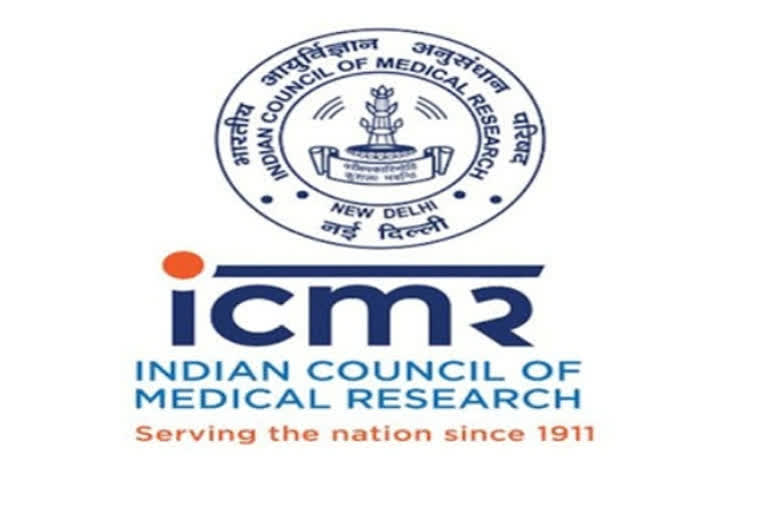Hyderabad: The incidences of cancer are are high among men compared to women, according to a report of ICMR. ICMR released 'Clinicopathological Profile of Cancers in India: A Report of the Hospital-Based Cancer Registries, 2021'.
-
ICMR released “Clinicopathological Profile of Cancers in India: A Report of the Hospital Based Cancer Registries, 2021”. Report is accessible at https://t.co/Q39msFqx98@MoHFW_INDIA @DeptHealthRes @ncdirindia @NICPR_Noida @IndiaVsCancer pic.twitter.com/eWs9aX7AKQ
— ICMR (@ICMRDELHI) September 26, 2021 " class="align-text-top noRightClick twitterSection" data="
">ICMR released “Clinicopathological Profile of Cancers in India: A Report of the Hospital Based Cancer Registries, 2021”. Report is accessible at https://t.co/Q39msFqx98@MoHFW_INDIA @DeptHealthRes @ncdirindia @NICPR_Noida @IndiaVsCancer pic.twitter.com/eWs9aX7AKQ
— ICMR (@ICMRDELHI) September 26, 2021ICMR released “Clinicopathological Profile of Cancers in India: A Report of the Hospital Based Cancer Registries, 2021”. Report is accessible at https://t.co/Q39msFqx98@MoHFW_INDIA @DeptHealthRes @ncdirindia @NICPR_Noida @IndiaVsCancer pic.twitter.com/eWs9aX7AKQ
— ICMR (@ICMRDELHI) September 26, 2021
A total of 13,32,207 cancer cases were registered from 96 hospitals under the National Cancer Registry Programme (NCRP) during 2012-19. Of these, 6,10,084 cases, were included for analysis, based on the completeness and quality of data.
Out of 6,10,084 cancers, 3,19,098 (52.4%) cancers were reported in males, and 2,90,986 (47.6%) in females. Cancers of the head and neck region accounted for nearly one-third (31.2%) of the cancers among males. Gynecologic cancers, including breast cancer (51%), accounted for over half of all cancers in females. Childhood cancers in 0 - 14 age groups comprised 7.9% of all cancers.
The report was prepared by the Indian Council of Medical Research - National Centre for Disease Informatics and Research, Bengaluru. According to the report, the relative proportion of site-specific cancers was higher in males than females except for thyroid cancer (2.5 % in females versus 1% in males) and gall bladder cancer (3.7% in females versus 2.2 % in males).
The highest proportion of cancer from all sites was reported in the age group 45 to 64 years, except for prostate cancer, which was higher in those over 65. Cancers in sites associated with tobacco use comprised 48.7% of cancers among males and 16.5% among females.
Over 90% of the cancers in different organ sites got diagnosed by microscopic examination, the report found. Among all the cancers, the highest proportion of distant metastasis at presentation was seen in patients with lung cancer (49.2% males and 55.5% females), followed by gall bladder cancer (40.9% males and 45.7% females) and prostate cancer (42.9%).
Over one-third of patients with cancers of the tongue, larynx, thyroid, corpus uteri, kidney (including children), bladder and retinoblastoma had localized disease at the time of presentation.
Chemotherapy was the most typical treatment modality for many cancers regardless of the clinical extent of disease at presentation, including cancers of the liver, gall bladder, stomach, lung and childhood cancers. Regardless of the organ site and clinical extent, most cancer patients, were initiated on cancer-directed treatment within 8 to 30 days of diagnosis.
Over half of the patients with cancer of the brain and nervous system and about one-third of the patients of lung, prostate, bladder and thyroid cancer with localized disease, diagnosed at the reporting institution were initiated on cancer-directed treatment on the same day.
The report was prepared based on seven-year data of cancer cases collected from 96 Hospital Based Cancer Registries (HBCR) under the NCRP. The Indian Council of Medical Research (ICMR) started the National Cancer Registry Programme (NCRP) in 1981, through a network of Population and Hospital Based Cancer Registries.
The cancer registries systematically collect, store, analyze, interpret and generate meaningful data on cancer, which helps develop plans and implement effective evidence-based strategies.
Read: How going virtual has affected people With ADHD during pandemic?



